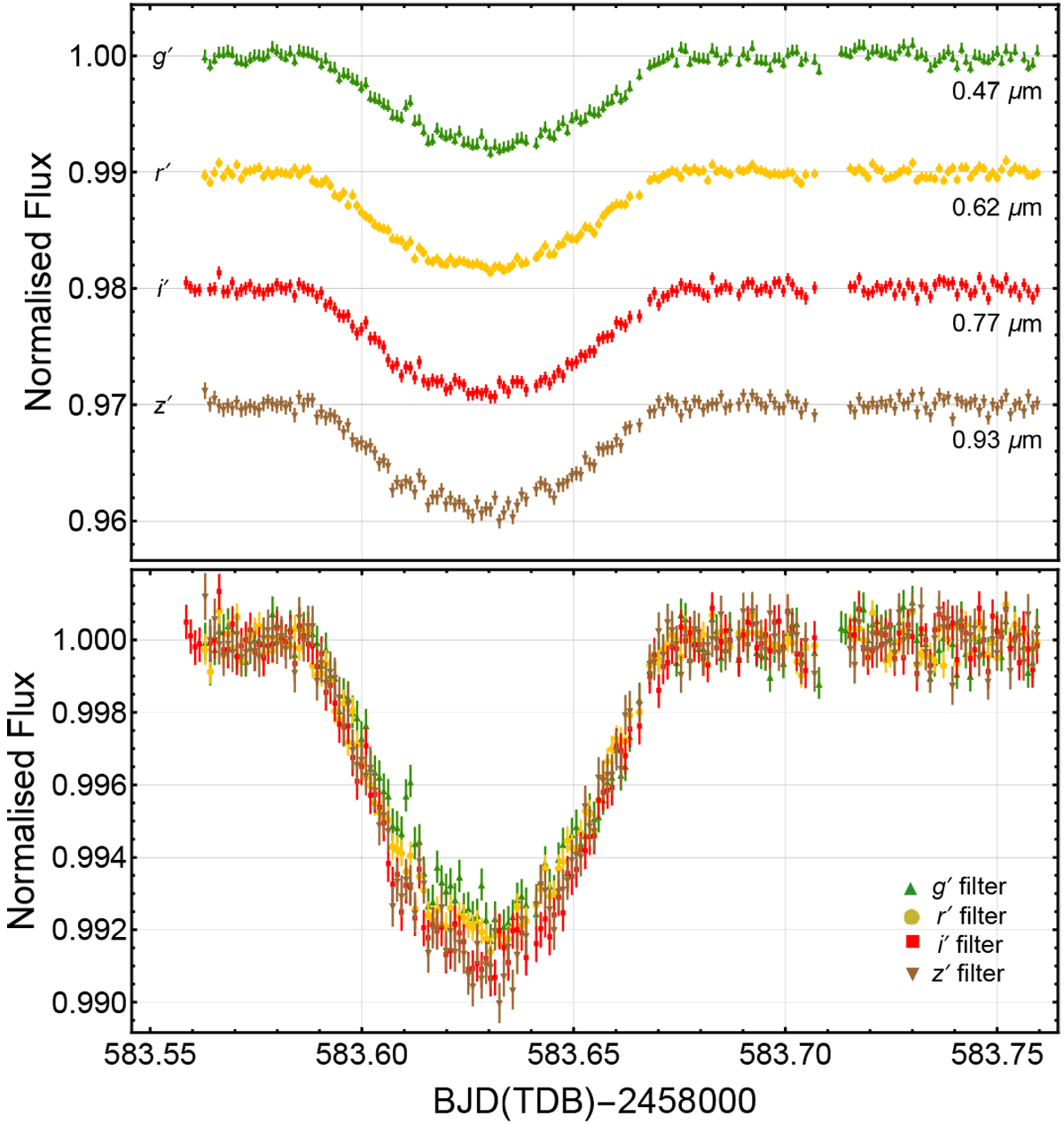Fig. 5

Simultaneous four optical light curves of a transit of WASP-174b obtained with GROND. Top panel: individual light-curves with arbitrary offsets for clarity. Bottom panel: all light-curves superimposed for comparison purposes. The passbands and their central wavelengths are labelled. Note how the transit light curve shape changes with wavelength. Contrary to higher-inclination transiting planetary systems, the transit in the g′ band is shallower than the other bands, because the transit is grazing and the limb darkening is stronger at bluer wavelengths. The same effect was observed in only another case, that is WASP-67b (Mancini et al. 2014).
Current usage metrics show cumulative count of Article Views (full-text article views including HTML views, PDF and ePub downloads, according to the available data) and Abstracts Views on Vision4Press platform.
Data correspond to usage on the plateform after 2015. The current usage metrics is available 48-96 hours after online publication and is updated daily on week days.
Initial download of the metrics may take a while.


